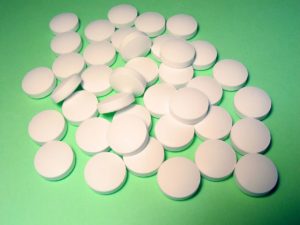 This research suggests that emulsifiers (which are added to most processed foods to aid texture and extend shelf life) can alter the gut microbiota (the community of microbes that live in our gut) in such a way as to cause intestinal inflammation. Even though the study was done on mice, it is thought it also applies to humans. From Medical Daily:
This research suggests that emulsifiers (which are added to most processed foods to aid texture and extend shelf life) can alter the gut microbiota (the community of microbes that live in our gut) in such a way as to cause intestinal inflammation. Even though the study was done on mice, it is thought it also applies to humans. From Medical Daily:
You Are What You Eat: Food Additive Emulsifier Inflames Mouse Gut And Causes Obesity
Processed foods have changed the way we eat. Food can sit longer on shelves, but what does that mean for the stomach? In a new study published in the journal Nature, researchers from Georgia State University investigated how the widely used processed food additive emulsifiers played a role in the gut.
Emulsifiers are added to most processed foods in order to extend shelf life and add texture to the foods. The research team decided to feed mice a couple of the most common emulsifiers on the market — polysorbate 80 and carboxymethylcellulose — at doses comparable to a human’s consumption of processed foods. They watched the emulsifier change the mice’s gut microbiota, which is an individual’s personal 100 trillion bacteria inside the intestinal tract. Not only did this increase their chance of developing obesity-related disorders, but also inflammatory bowel disease. It’s no coincidence both conditions have been increasing since the 1950s.
"The dramatic increase in these diseases has occurred despite consistent human genetics, suggesting a pivotal role for an environmental factor," the study’s coauthor Benoit Chassaing, a researcher from GSU’s Institute for Biomedical Sciences, said in a press release. "Food interacts intimately with the microbiota, so we considered what modern additions to the food supply might possibly make gut bacteria more pro-inflammatory."
The emulsifiers, which are groups of oil-and water-friendly molecules, help to hold food together. Mayonnaise without emulsifiers, for example, will separate from an oily top layer to a thicker white layer that rests on the bottom of the jar. Once the emulsifiers were digested by the mice, their blood-glucose levels went awry, inflamed their intestinal mucus layer, which left them with weight gain, specifically concentrated in the abdomen. The bacterial changed triggered chronic colitis from causing intestinal inflammation and metabolic syndrome, which includes obesity, hyperglycemia, and insulin resistance.
Ultimately, microbiologists say you are what you eat. If your diet is smeared with margarine, mayonnaise, creamy sauces, candy, ice cream, and most other packaged and processed baked goods, you and your gut may be at risk. "We do not disagree with the commonly held assumption that over-eating is a central cause of obesity and metabolic syndrome," the study’s coauthor Andrew T. Gewirtz, a researcher from GSU’s Institute for Biomedical Sciences, said in a press release. "Rather, our findings reinforce the concept suggested by earlier work that low-grade inflammation resulting from an altered microbiota can be an underlying cause of excess eating."

 I am starting to read more and more negative comments from physicians and researchers about the big pharma and medical society recommendations for treating currently healthy people with
I am starting to read more and more negative comments from physicians and researchers about the big pharma and medical society recommendations for treating currently healthy people with  Excellent for those who want to exercise more, but don't want something complex. This is so simple that there is NO excuse for not doing this: walk fast for 3 minutes, then 3 minutes of strolling, and repeat 5 times (total=30 minutes).
Excellent for those who want to exercise more, but don't want something complex. This is so simple that there is NO excuse for not doing this: walk fast for 3 minutes, then 3 minutes of strolling, and repeat 5 times (total=30 minutes).